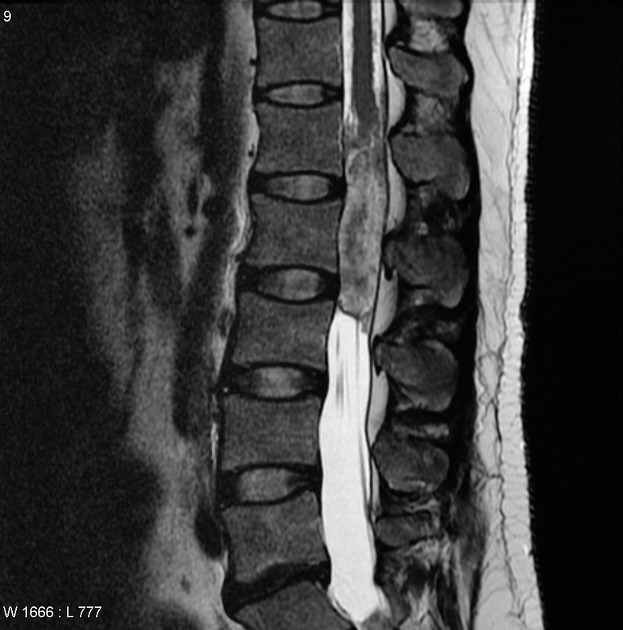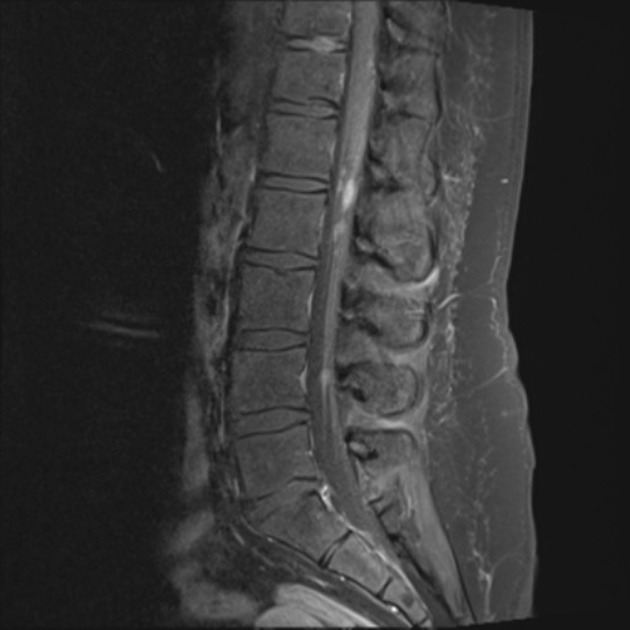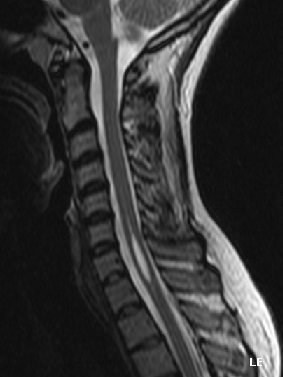spinal metastases




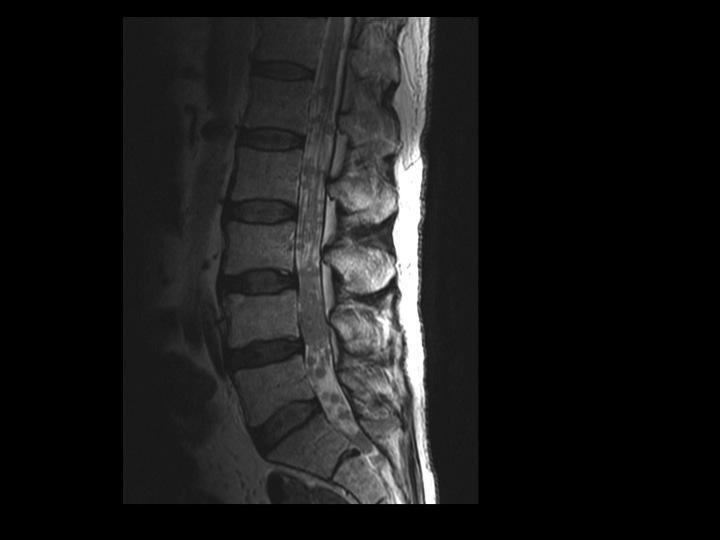






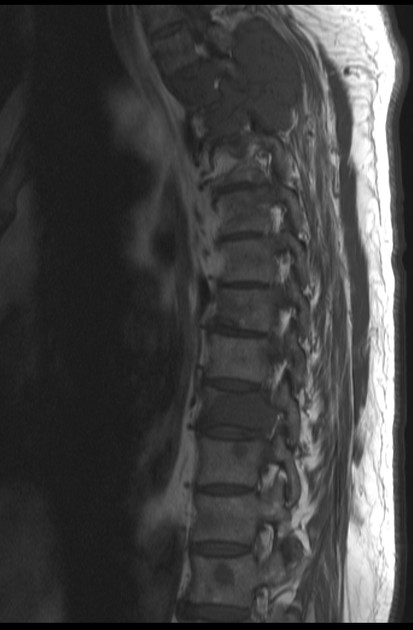




Spinal metastases is a vague term which can be variably taken to refer to metastatic disease to any of the following:
- vertebral metastases (94%)
- may have epidural extension
- intradural extramedullary metastases (5%)
- intramedullary metastases (1%)
Each of these are discussed separately. Below are some general remarks on metastatic disease to the spine, theca and cord.
Epidemiology
Approximately 90% of all spinal (cord + vertebral) neoplasms are considered metastatic in origin.
Clinical presentation
Presentation can be highly variable. Sudden onset development of the Brown-Sequard syndrome in patients with known metastatic cancer has been described as a presenting feature .
Pathology
Spread of malignant cells to the region is variable and includes:
- haematogenic: arterial or venous
- direct invasion: typically of paraspinal, retroperitoneal of pulmonary malignancies
- lymphatic: along the root sleeves
- subarachnoid: intracanalicular seeding of primary and secondary CNS neoplasms
As the vast majority of metastases to the region are to bone, this is reflected in the primaries which are encountered. Having said that breast cancer, lung cancer and melanoma are also relatively common sources of intradural disease.
Primaries include:
- breast: 22%
- lung: 15%
- prostate: 10%
- lymphoma: 10%
- kidney: 7%
- gastrointestinal tract: 5%
- melanoma: 4%
- unknown: 4%
- others: 24%
Differential diagnosis
For extradural lesions consider:
- spinal schwannoma/neurilemmoma
- spinal neurofibroma
- extradural cysts
- developmental
- acquired: degenerative, infectious, traumatic/iatrogenic
For intradural extramedullary lesions consider (see also leptomeningeal metastases):
- if diffuse (sugar coating)
- meningoradiculitis
- arachnoiditis
- if nodular (mostly at cauda equina)
- spinal meningioma
- spinal neurilemmoma/schwannoma
- leptomeningeal (pial) lipoma
- post-arachnoiditic adhesions
- drop metastases from CNS primaries
- ependymoma
- astrocytoma
- oligodendroglioma
- glioblastoma
- choroid plexus tumors
- germ cell tumors
- medulloblastoma (PNET)
For intradural intramedullary lesions consider:
- inflammatory lesions (transverse myelitis)
- developmental lesions (intramedullary lipoma, syringomyelia)
- primary spinal cord tumors
See also
Siehe auch:
- Myelonkompression
- Kompaktainsel
- Osteoid-Osteom
- Aneurysmatische Knochenzyste
- Ependymom
- Transverse Myelitis
- Glioblastoma multiforme
- vertebrale Metastasen
- Schwannom
- chronisch adhäsive Arachnopathie
- Astrozytom
- Oligodendrogliom
- neoplasms of the spinal canal
- Medulloblastom
- Osteoblastom
- Syringomyelie
- Hämangioblastom
- spinale Schwannome
- intradural extramedullary metastases
- spinal neurofibroma
- Vertebroplastie
- intraspinales Meningeom
- sugar coating
- Tumoren des Plexus choroideus
- neurilemmoma
- intramedullary metastases (spinal)
- the winking owl sign
- Knochenmetastasen
und weiter:

 Assoziationen und Differentialdiagnosen zu spinale Metastasen:
Assoziationen und Differentialdiagnosen zu spinale Metastasen:

